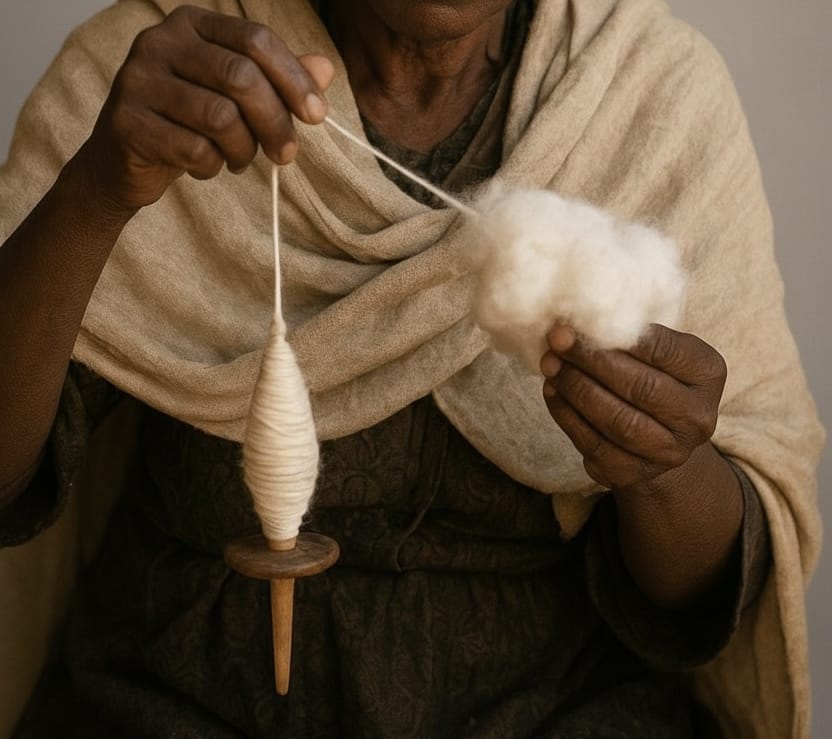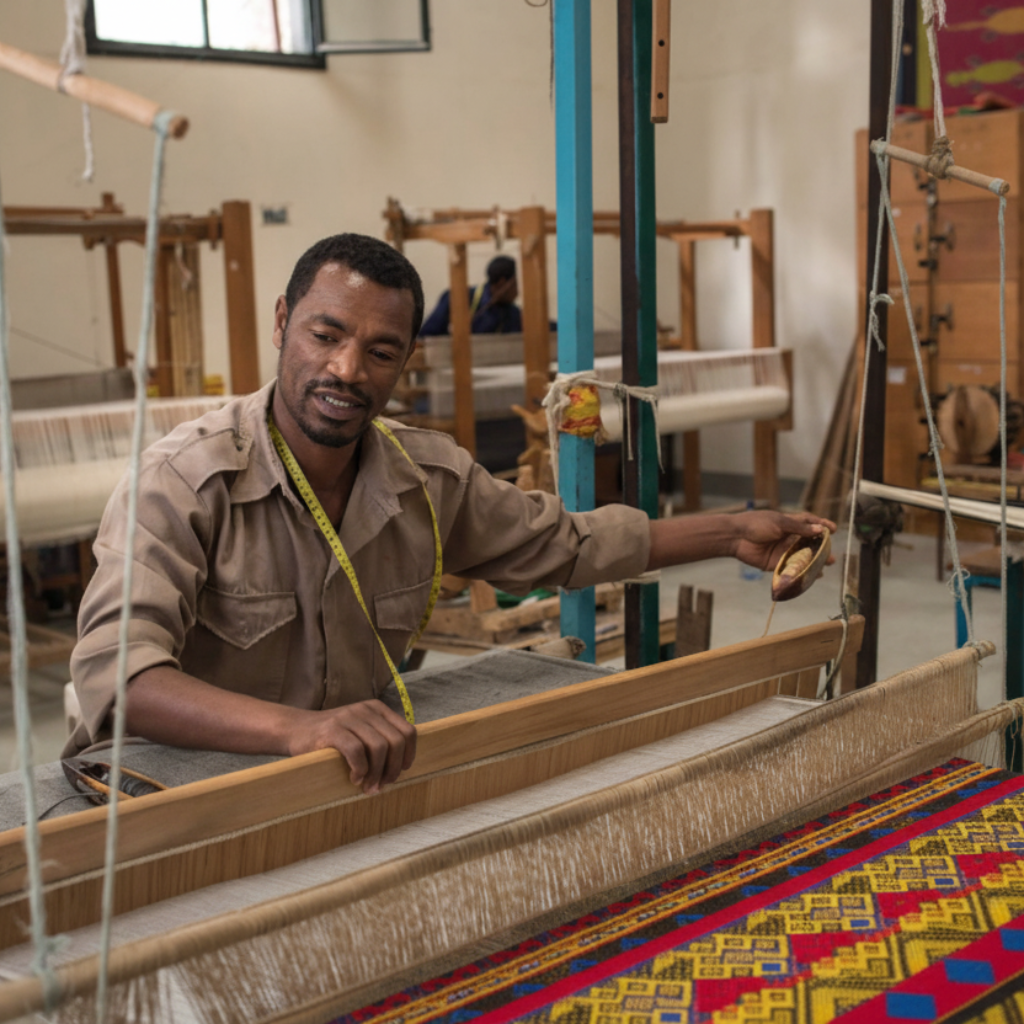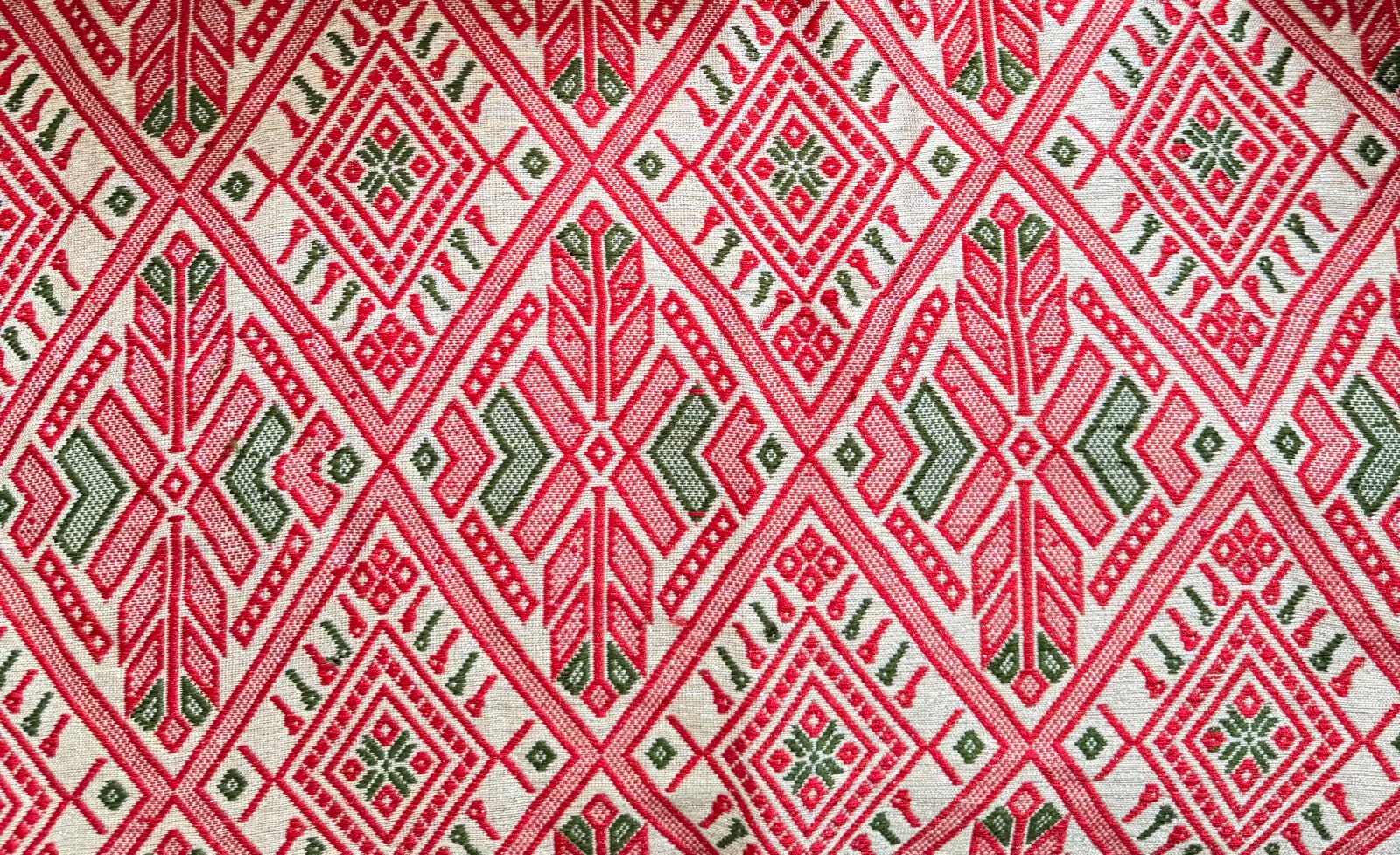History and Context: Woven in Ethiopia
The phrase "Woven in Ethiopia" speaks to a cherished tradition where weaving is not just production, but a story of heritage and human touch. Traditional Ethiopian clothing, such as the Habesha kemis (women’s dress), is an enduring celebration of culture, carrying purpose and meaning passed down through generations.
This rich legacy is built upon labor-intensive artisanal practices that ensure every piece is truly unique:

Ethiopian Cotton (Shemma)
Cotton production in Ethiopia dates back millennia. Traditional clothing is often made from this soft, breathable shemma cotton cloth.

Hand Spinning
The raw cotton is hand-spun on drop spindles. This specialized skill, passed down from mother to daughter, creates a soft yet textured thread with intricate idiosyncrasies that make each resulting product a one-of-a-kind piece.

Hand Weaving
The threads are woven on traditional two-pedal handlooms. This process is a rhythmic spectacle performed by artisans (historically men, known as Shemane). It requires considerable time, taking up to three weeks to finish one Habesha Kemis.

The Tibeb Detail
The garments are often accented with intricate tibeb (woven borders). These elegant jacquard designs incorporate shiny threads, sometimes silver or gold metallic threads, along the edges of the Habesha kemis.
